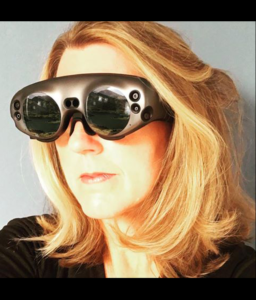
The vision that keeps getting served up, when self-driving cars finally become ubiquitous, is that of a fleet of vehicles capable of computationally precise pathfinding. By talking to one another, they will be able to tool down the freeway, bumpers within inches, rearranging their groupings so as to allow for maximum aerodynamics and most efficient travel times. It’s well within the bounds of these vehicle designs, computers can react thousands of times faster than we do and if we give them the ability to communicate with one another, cross-platform, they can do a brilliant of of staying out of one another’s travel path.
But as we know, or many suspect, the best, most efficient solution is not always the “best†(for human-comfort orders of “best†at any rate).  The auto-pilot on an airplane can land it in a storm with little problem, but the decision making keeps the plane intact, with little regard for the comfort or even safety of the passengers. The world is riddled with examples of human “best†taking the lead over efficiency.  Everybody wants a window or an aisle seat, people will take the time to wait for the next elevator if the one arriving seems too full (even if it is still well within its weight capacity). What is “best†for a computer is simply not always “best†for a person.
This got me thinking about customization, user preferences for these kinds of vehicles. I mean obviously you *can* drive with your bumpers within 5 inches of each other, but anyone who’s had their hands on the wheel is going to be more comfortable and familiar with the “two second ruleâ€, where a driver maintains a two-second gap between your car and the one ahead of you. Granted there are a few there who seem to have no concept of personal space while maneuvering a 2000 pound pile of carbon fiber and steel, but by and large, most drivers leave a comfortable distance between the cars around them.
And as you sit, safely ensconced in your self-driving box (assuming you’re not distracted by a film or some quality “personal timeâ€), you may not at all enjoy your vehicle tailgating someone else or someone else’s vehicle tailgating yours. The most efficient mode of travel may simply be nerve-wracking to anyone who hasn’t grown up with it.
I imagine that the initial solution is going to be the allowance of “user preferencesâ€.  You can choose wake times and ringtones on your phone, so it follows that car manufacturers might allow a user to set things like minimum distance to the car in front of them, or maximum tailgate distance (in fact, aggressive human drivers may be able to take advantage of gaps in traffic left by two cars whose owners requested a large buffer around them). Cars would communicate these preferences between each other and roll that into their driving calculations as they go.















